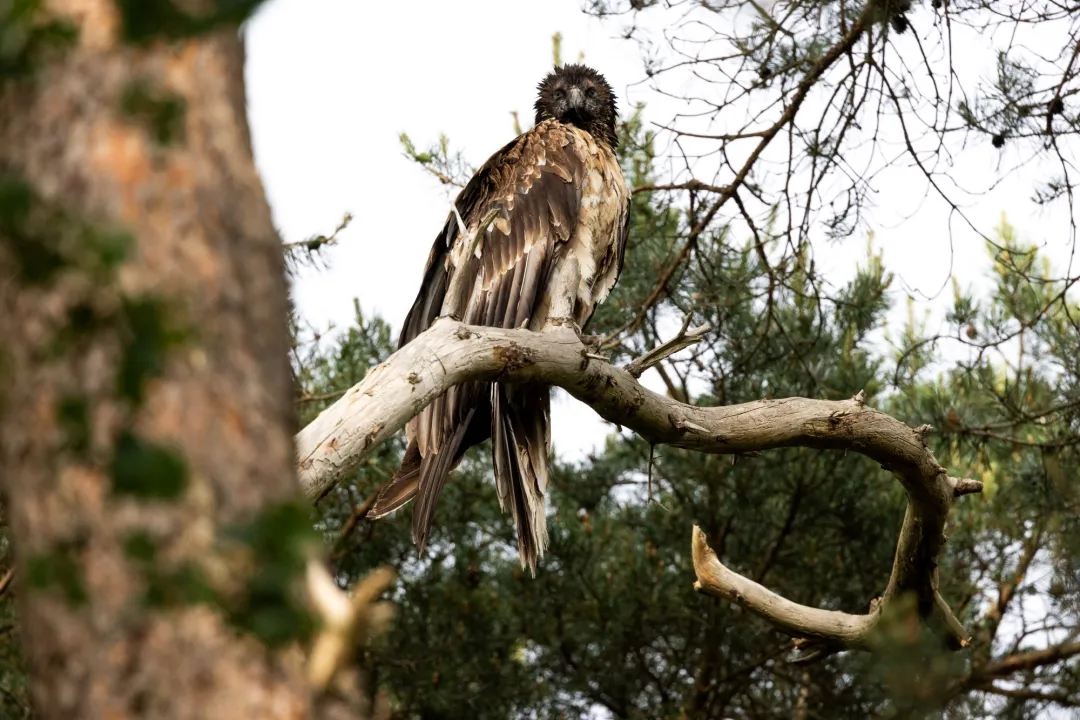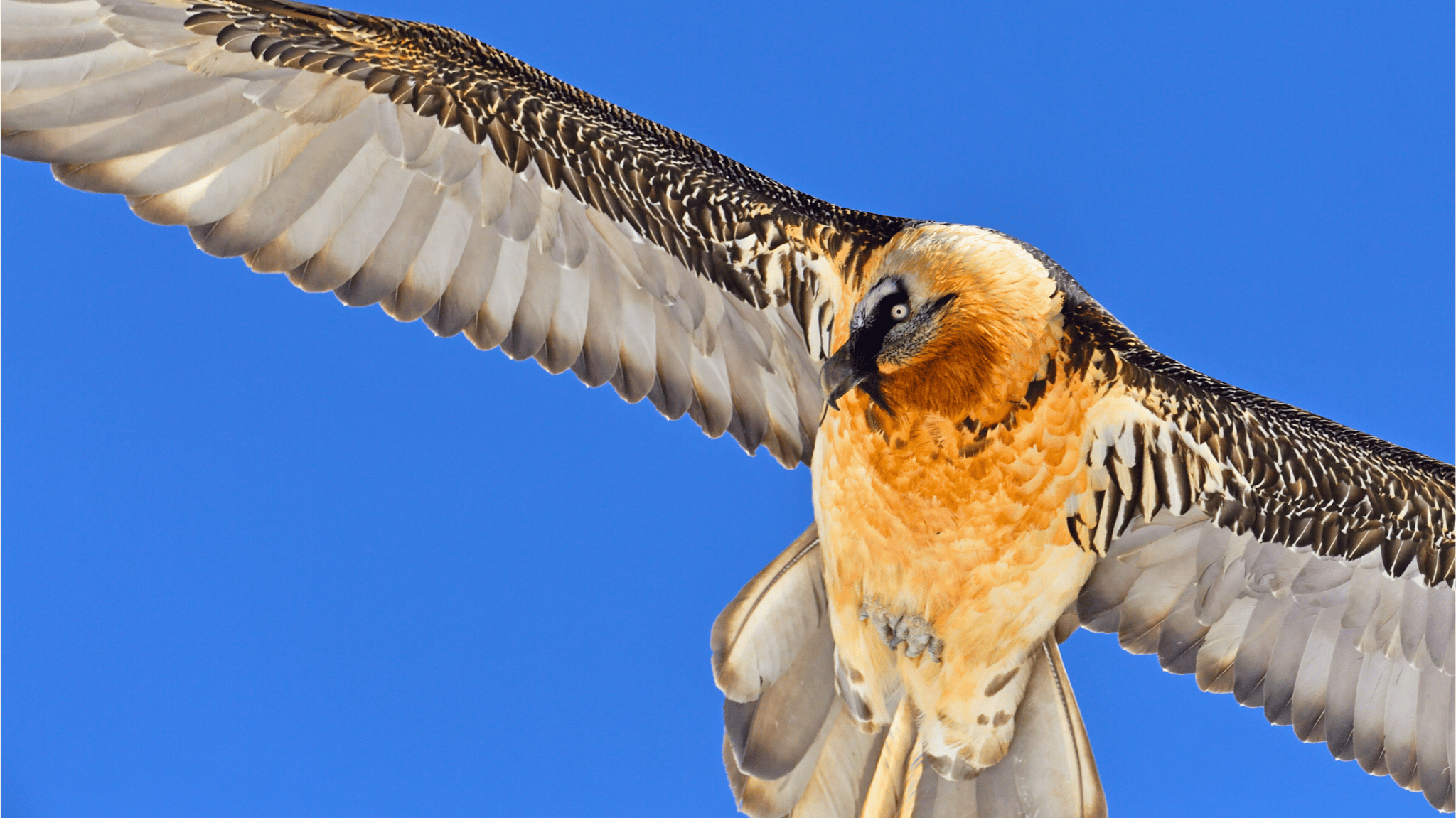
A captive-bred Bearded Vulture that broke its wing and leg could not be released as planned alongside the other four Bearded Vultures released in the Grands Causses during mid-June. After about a month and a half of treatment, Aven was finally ready for freedom. As she is much older compared to the typical release age and recently recovered from an injury, the monitoring team is keeping a very close eye on her to see how she is adapting to her new home.
Rehabilitation
This year, two Bearded Vultures hatched at the Wildlife Rehabilitation and Breeding Centre of the Green Balkans, and both of them were destined for release in the Grands Causses as part of the LIFE GypConnect project. However, about a month and a half ago, a few days before the birds had to leave for France, the breeding team at the Centre noticed an atypical behaviour in one of the young birds. The bird named Aven was not standing up, and couldn’t even if she attempted to do so. The vet team quickly performed an X-ray at the Trakia University, and detected a fracture of the right leg and wing of the bird. Following consultation with the veterinarians from the University’s Veterinary Surgery Department, EAZA and the Vulture Conservation Foundation (VCF), the team managed the fractures with splint bandages. Nursing this vulture back to health, was not an easy task. The team had to teach the bird to feed outside its family while also carrying our rehabilitation therapies and preventive examinations. Thankfully, the hard work of the team at the Centre paid off, and Aven made a recovery. On 28 July, she began her journey from Bulgaria to France, for her eventual release to the wild.
Release
Last week, the LIFE GypConnect project team had the pleasure of welcoming Bearded Vulture Aven in the Grands Causses. On Thursday 30 July, LPO equipped Aven with a GPS tag, rings and marked her feathers to be able to monitor her movements and behaviour in the wild. The next day, on Friday morning, the team released her at the hacking cave at 144 days old. This is a special case. Based on our previous experience, the LIFE GypConnect team still decided to release Aven even at this older age, but of course with extra measures being taken. The team released her in Lozère instead of Aveyron like they did for the other four Bearded Vultures. In Aveyron, there is currently a pair of eagles and their hatchlings, which could lead to the adults aggressively attacking Aven in flight, which is a common occurrence between eagles and young vultures. Also, the more unobstructed terrain of Lozère will make it easier to follow Aven during her flights, so it seemed like the better release site for this case.
The team also took some additional measures to ensure Aven’s safety. They increased the height of the wire mesh to avoid any premature flight of the young female as much as possible as it could lead to injury. Moreover, they plan to keep Aven in the hacking cave for a minimum of two weeks prior to opening the cave, depending on the evolution of the bird. Given the bird’s history, the monitoring team is extra vigilant in tracking the movements of Aven.
The release of Aven is definitely a special case and we will learn a lot from it. We wish the vulture a smooth and successful adaptation to the wild, and a bright future ahead!
This is the last release of the Bearded Vulture Release Season for 2020! Despite the additional challenges this year presented, 25 Bearded Vulture nestlings successfully hatched within the VCF coordinated Bearded Vulture Captive Breeding Network. Out of these, the VCF and its partners released a total of 21 Bearded Vultures to the wild across France, Spain and the Alps!
LIFE GypConnect

Led by the League pour la Protection des Oiseaux (LPO), the LIFE GYPCONNECT project aims to establish a breeding population of Bearded Vultures in the Massif Central and Department of the Drôme. Releasing captive-bred Bearded Vultures into the wild at sites such as the Parc Naturel Régional des Grands Causses, Parc Naturel Régional des Baronnies Provençales and Parc Naturel Régional du Vercors will create a core population that will connect the two populations of the species in the Alps and Pyrenees. To facilitate movements between the new population and the Alpine and Pyrenean populations the LIFE GYPCONNECT team is creating a network of supplementary feeding stations, and tackling threats such as poisoning, and collision and electrocution with the electricity infrastructure.








